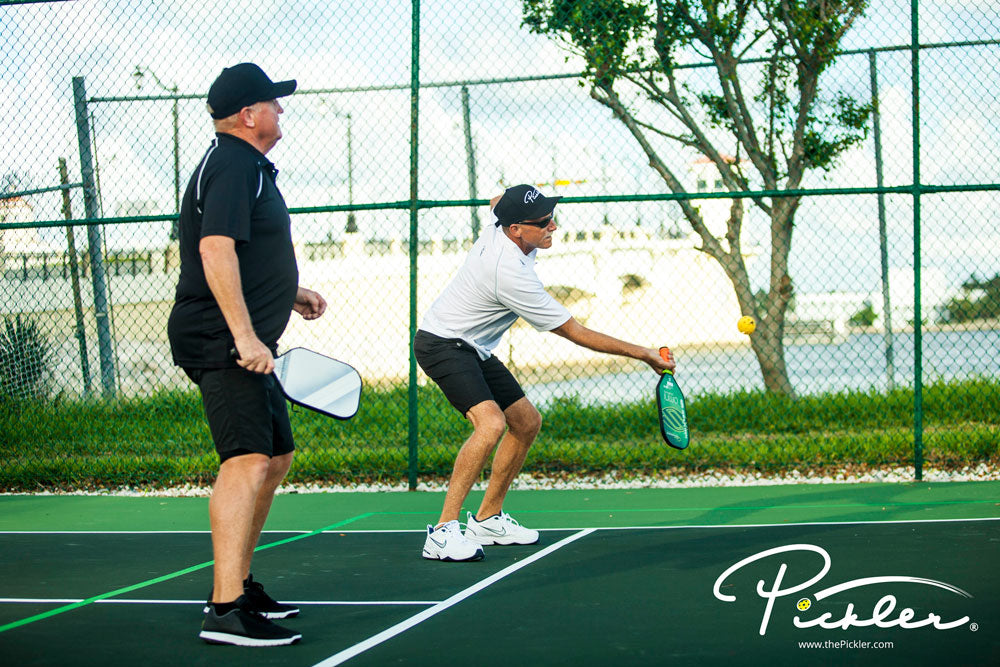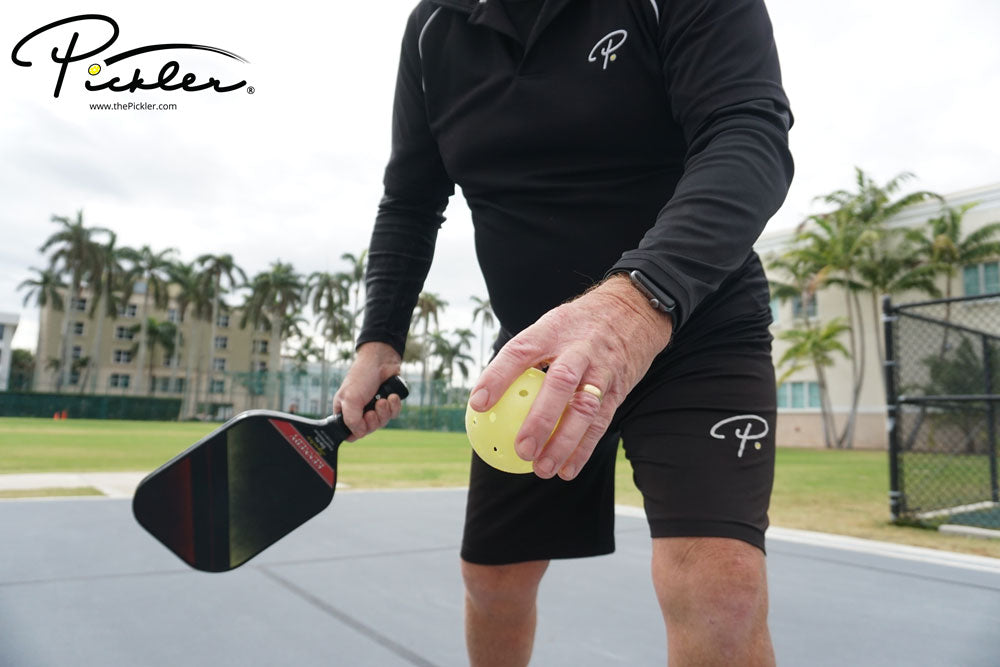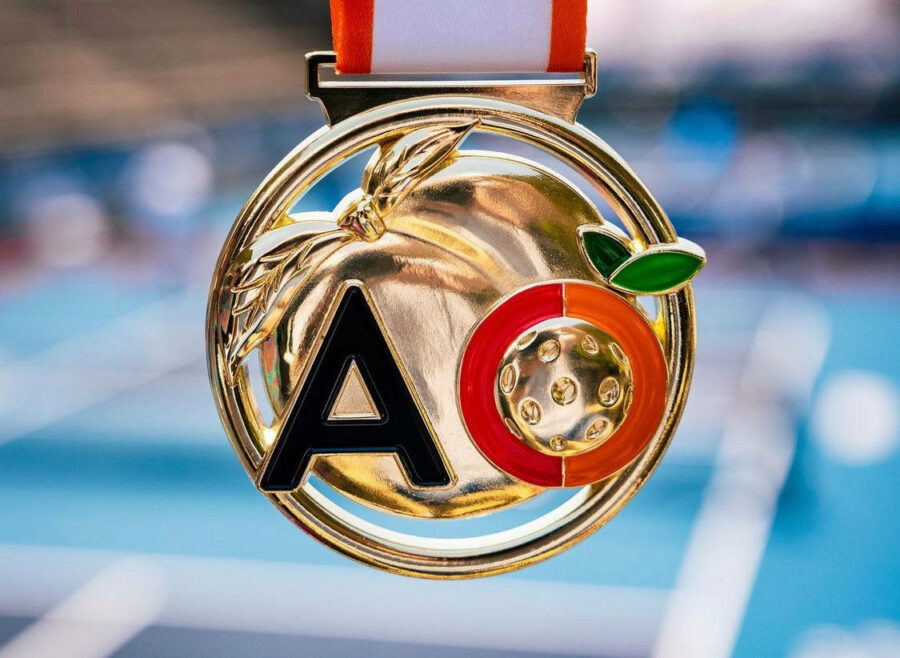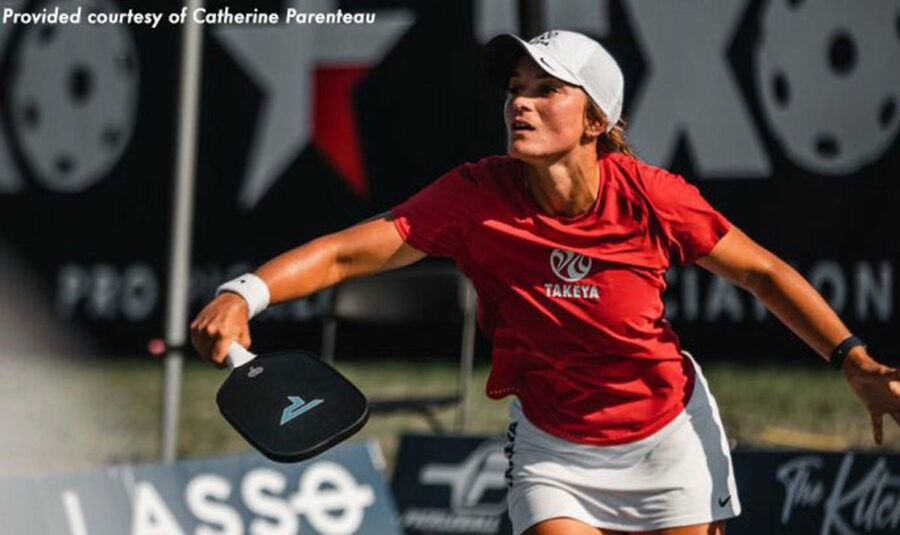The Non-Volley Zone, also known as the Kitchen, is the 14-foot area in the middle of the court, which extends 7 feet on either side of the pickleball net. The Non-Volley Zone rules are some of the pickleball rules that make the sport of pickleball truly unique. However, the Non-Volley Zone rules are nuanced and can be tricky to grasp at first. Let’s breakdown the most important rules on the Non-Volley Zone in the sport of pickleball.
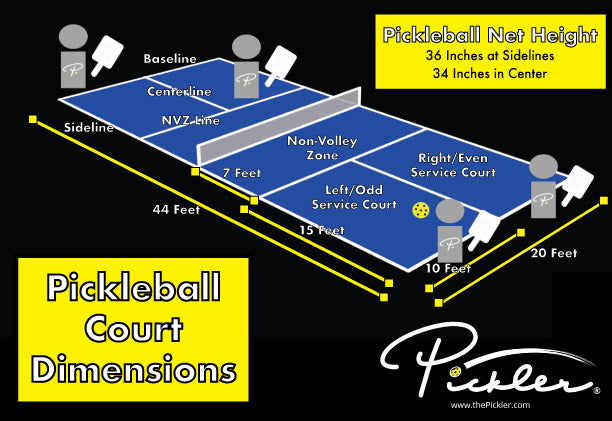
No Volleys in the Non-Volley Zone
First and foremost, you may not volley the pickleball while making contact with the Non-Volley Zone or the Non-Volley Zone line (also known as the Kitchen line). A volley is a shot in pickleball where you hit the pickleball out of the air, without the pickleball bouncing. You may only volley the pickleball outside of the Non-Volley Zone. Hence, the appropriate name of the Non-Volley Zone.
The key is whether the player in the act of volleying the pickleball (again, hitting the pickleball out of the air, without the pickleball bouncing) is touching the Non-Volley Zone (or touching anything that has contact with the Non-Volley Zone) at any point during the act of volleying the pickleball. If so, then the player would have committed a fault by making contact with the Non-Volley Zone during the act of hitting a volley, and the player or team that committed the fault will lose the rally. Further, if in a tournament, the referee for the pickleball game will shout two of his/her favorite words – “Foot fault!”
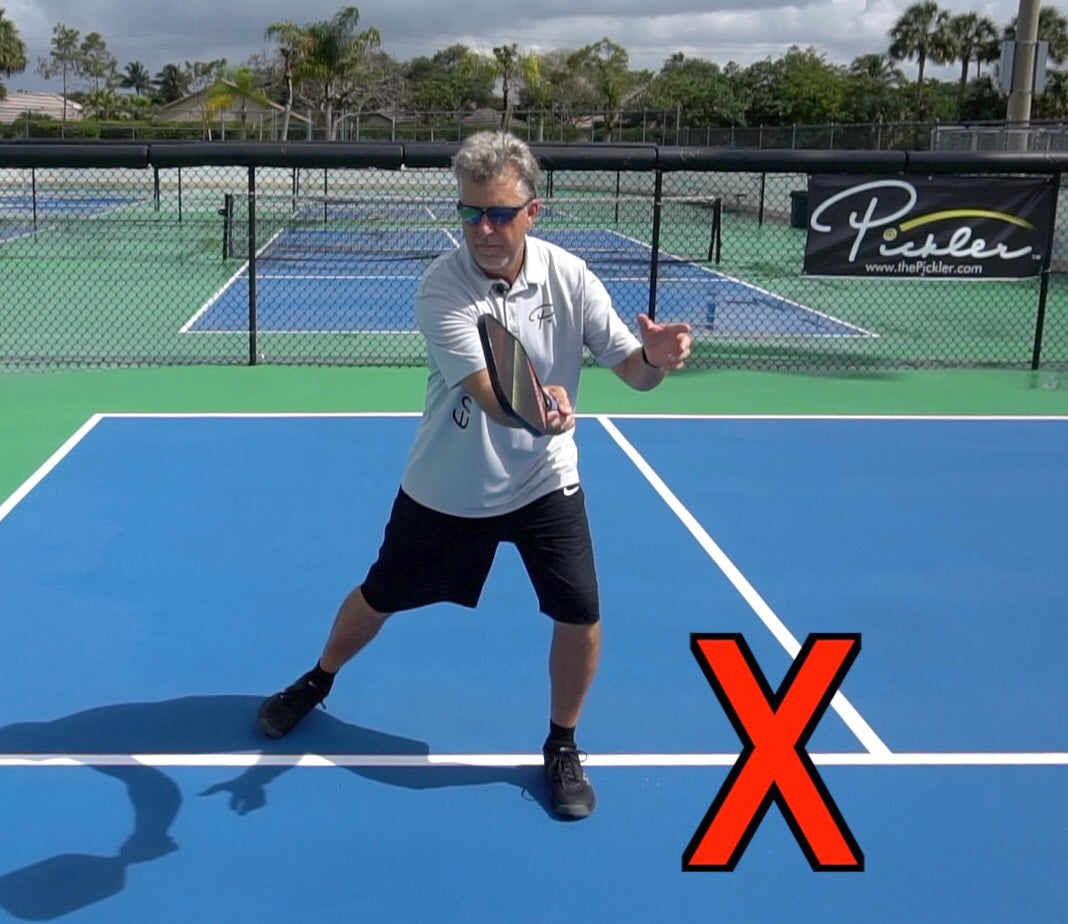
There are a number of ways that you can make contact with the Non-Volley Zone during the act of hitting a volley. These include:
- Stepping on or standing in the Non-Volley Zone (including stepping or standing on the Non-Volley Zone line) during the act of hitting a volley;
- Making contact with anyone or anything that is touching the Non-Volley Zone (for instance, making contact with your partner who is standing in the Non-Volley Zone) during the act of hitting a volley;
- Dropping your paddle, hat, sunglasses, or other article into the Non-Volley Zone during the act of hitting a volley (for instance, you hit a volley and drop your paddle or your hat into the Non-Volley Zone);
- Touching the Non-Volley Zone with your paddle during your volley motion, either before or after making contact with the pickleball (for instance, you hit a volley and follow-through your swing so that your paddle grazes the Non-Volley Zone line); or
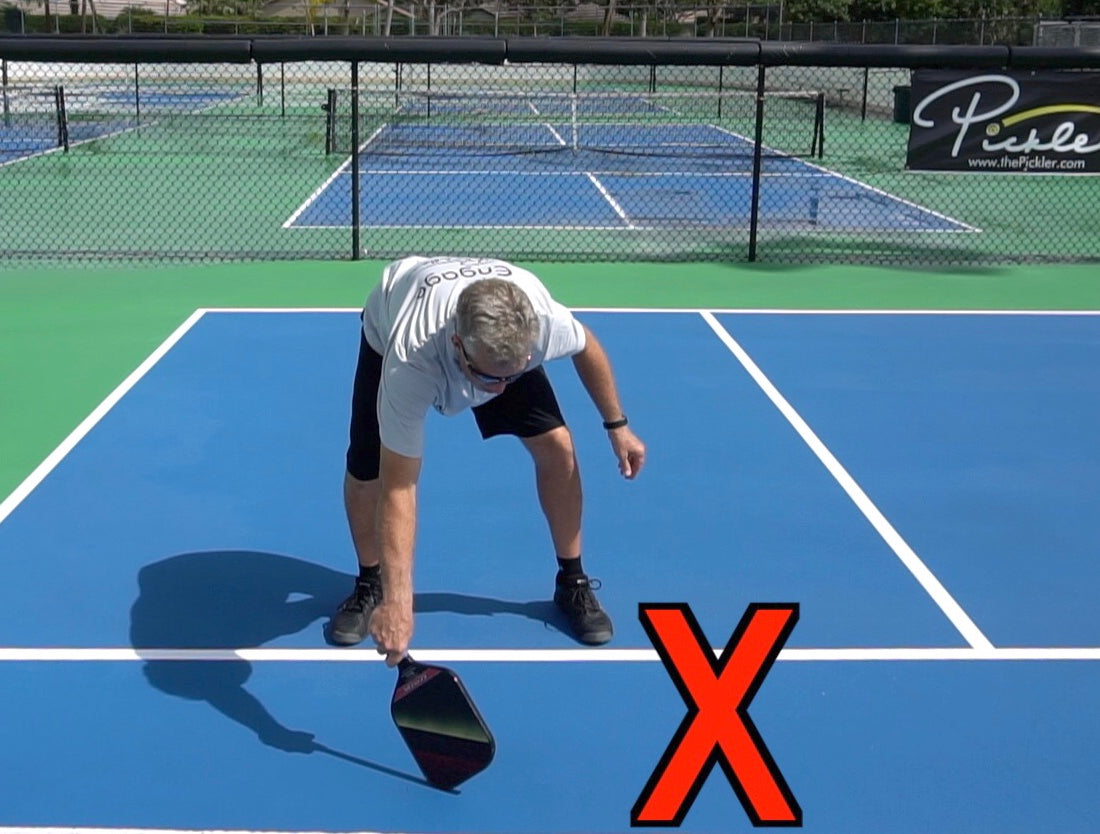
- Allowing your momentum to carry you into the Non-Volley Zone after you hit the pickleball outside of the Non-Volley Zone. To be clear, it is a fault if your momentum carries you into the Non-Volley Zone even if you make contact with the pickleball outside of the Non-Volley Zone. This is true even if, before you enter into the Non-Volley Zone, the pickleball becomes dead. For example, it is a fault if you run to the Non-Volley Zone line, strike a volley outside of the Non-Volley Zone, and then your momentum causes you to step into the Non-Volley Zone. Your momentum ends when you (a) regain balance or control of your motion and (b) you either (i) stop moving toward the Non-Volley Zone, or (ii) pause to start a new motion.
What Is Permitted in the Non-Volley Zone?
As noted above, you may not volley the pickleball (in other words, hit the pickleball in the air, without the pickleball bouncing) while making contact with the Non-Volley Zone. However, you may (1) hit a volley outside of the Non-Volley Zone; (2) hit the pickleball after it bounces while in the Non-Volley Zone; and (3) simply stand (without volleying the pickleball) while in the Non-Volley Zone, including while your partner hits a volley.
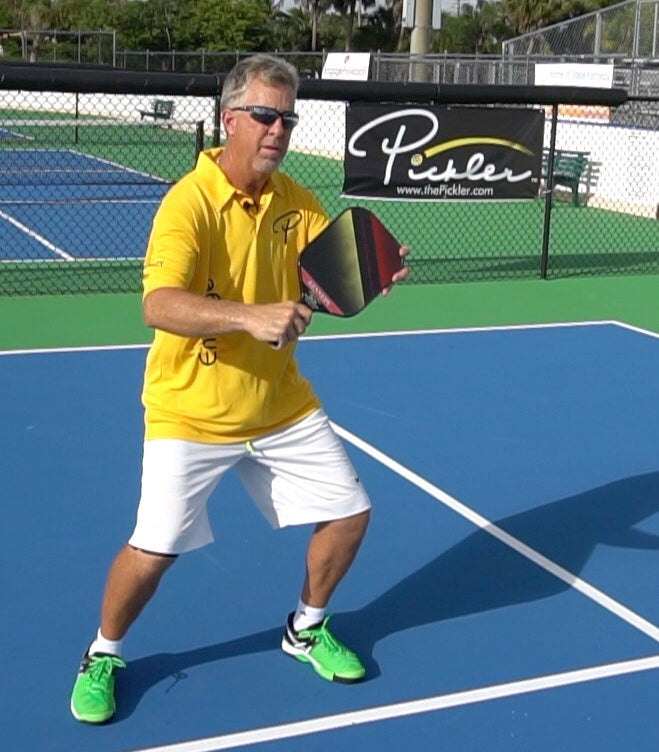
Volleys Outside of the Non-Volley Zone
Volleys are permitted anywhere on the pickleball court, other than in the Non-Volley Zone. For instance, you may strike a volley at the baseline, anywhere between the Non-Volley Zone line and the baseline, or anywhere else on the pickleball court besides the Non-Volley Zone. You may also strike a volley in the air above the Non-Volley Zone. In other words, you may reach over the Non-Volley Zone line, in the air, above the surface of the court to hit the pickleball. Since you did not touch the Non-Volley Zone, or otherwise make contact with anyone or anything touching the Non-Volley Zone, then you would not have committed a fault.
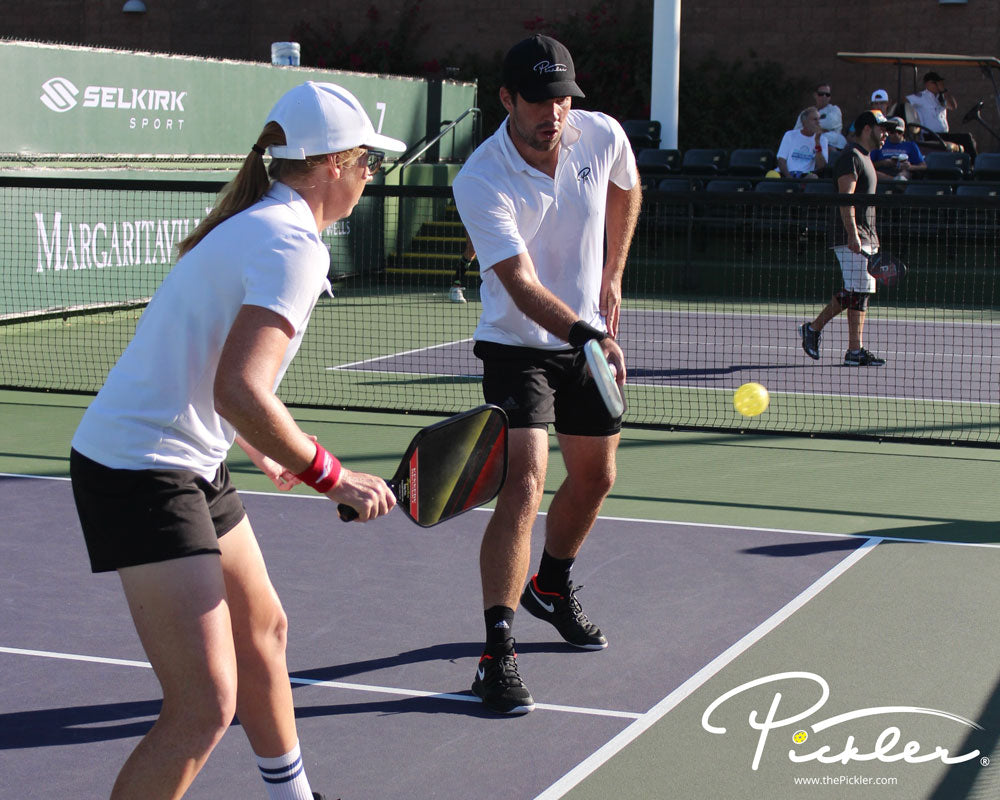
There can be some close calls on the pickleball court as to whether a player really touched the Non-Volley Zone or Non-Volley Zone line when reaching over the Non-Volley Zone line to strike the pickleball. For example, one common debate is when a pickleball player’s shoes slightly curl up in the front of the shoe – think of the curl on the front of a shoe for a Christmas elf. The question becomes does the shoe actually touch the Non-Volley Zone line? If a pickleball player’s shoes do not actually touch the Non-Volley Zone or Non-Volley Zone line, then no fault would have occurred. However, when pickleball players are right up against the Non-Volley Zone line, the margin to see the slight curl of an athletic shoe is so small that most referees will likely call a foot fault if the shoe seems to overhang on the Non-Volley Zone line.
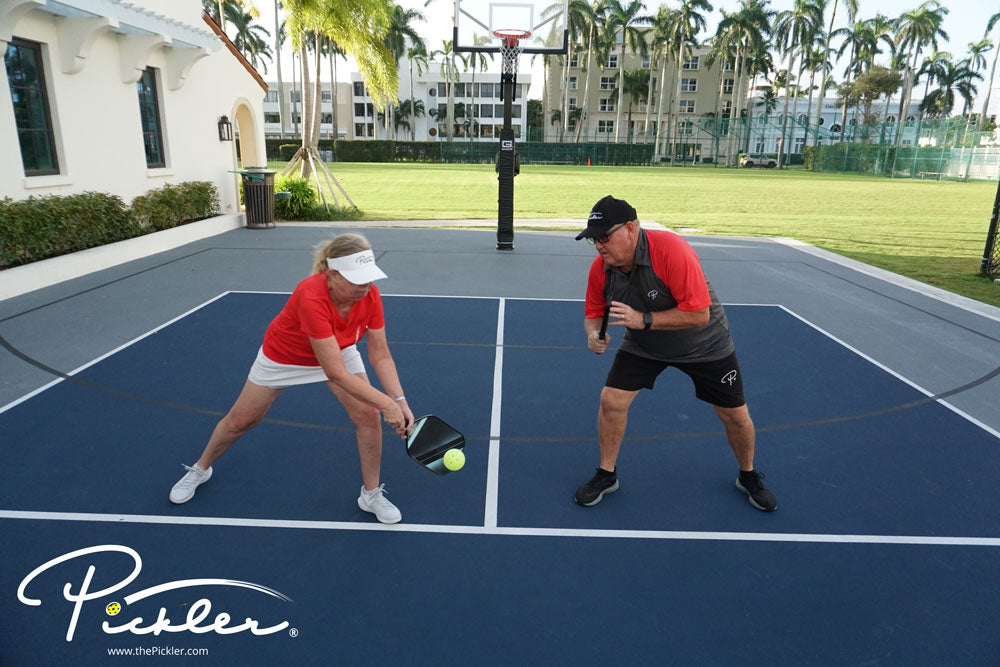
Pickleballs that Bounce in the Non-Volley Zone (or on the Non-Volley Zone Line)
The Non-Volley Zone rules only prohibit volleys in the Non-Volley Zone. You may hit non-volley shots in the Non-Volley Zone. In other words, you may hit the pickleball in the Non-Volley Zone after the pickleball has bounced. Once the pickleball has bounced, then your shot would not be considered a volley, as a volley is a shot where you hit the pickleball out of the air, without the pickleball bouncing.
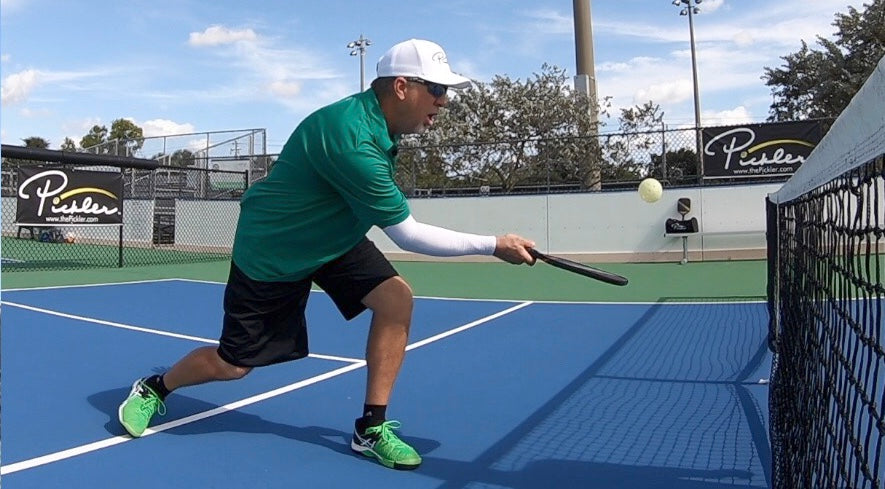
Why You Should Stay Out of the Kitchen
You may also generally stand in the Non-Volley Zone as long as you are not volleying the pickleball. This includes entering the Non-Volley Zone at any time before or after the pickleball bounces, and standing in the Non-Volley Zone while your partner hits a volley. However, this is not recommended. This is because smart pickleball players will simply hit the pickleball in the air to you or at you while you are standing in the Non-Volley Zone in an attempt to cause you to violate the Non-Volley Zone cardinal rule of no volleys in the Kitchen!
How to Re-Establish Outside of the Non-Volley Zone – Jumping Is Not Enough
If a pickleball player touches the Non-Volley Zone (including the Non-Volley Zone line), then that pickleball player cannot volley the pickleball (in other words, hit the pickleball out of the air, without the pickleball bouncing) until both feet touch the court surface outside of the Non-Volley Zone. The act of touching both feet on the court surface outside of the Non-Volley Zone is called “re-establishing your feet.” If a pickleball player does not re-establish both feet outside of the Non-Volley Zone before hitting a volley, then that player would have committed a fault.
One common misconception is that a pickleball player that stands in the Non-Volley Zone, jumps to hit the pickleball out of the air, and then lands outside of the Non-Volley Zone, did not commit a fault because he/she hit the pickleball while jumping in the air above the Non-Volley Zone. However, this is in fact a fault because the jumping pickleball player did not re-establish his/her feet prior to volleying the pickleball out of the air. In other words, if you stand in the Non-Volley Zone, jump to hit a volley, and land outside of the Non-Volley Zone, then you commit a fault. This is because you did not re-establish your feet on the pickleball court surface before hitting your volley.
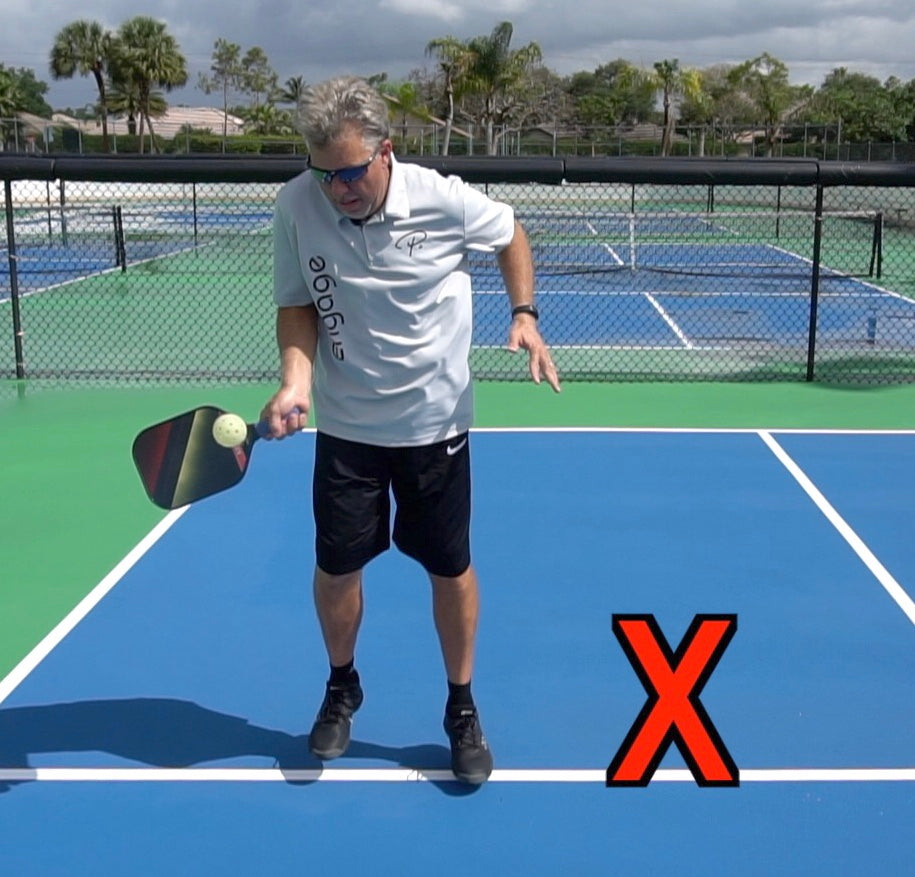
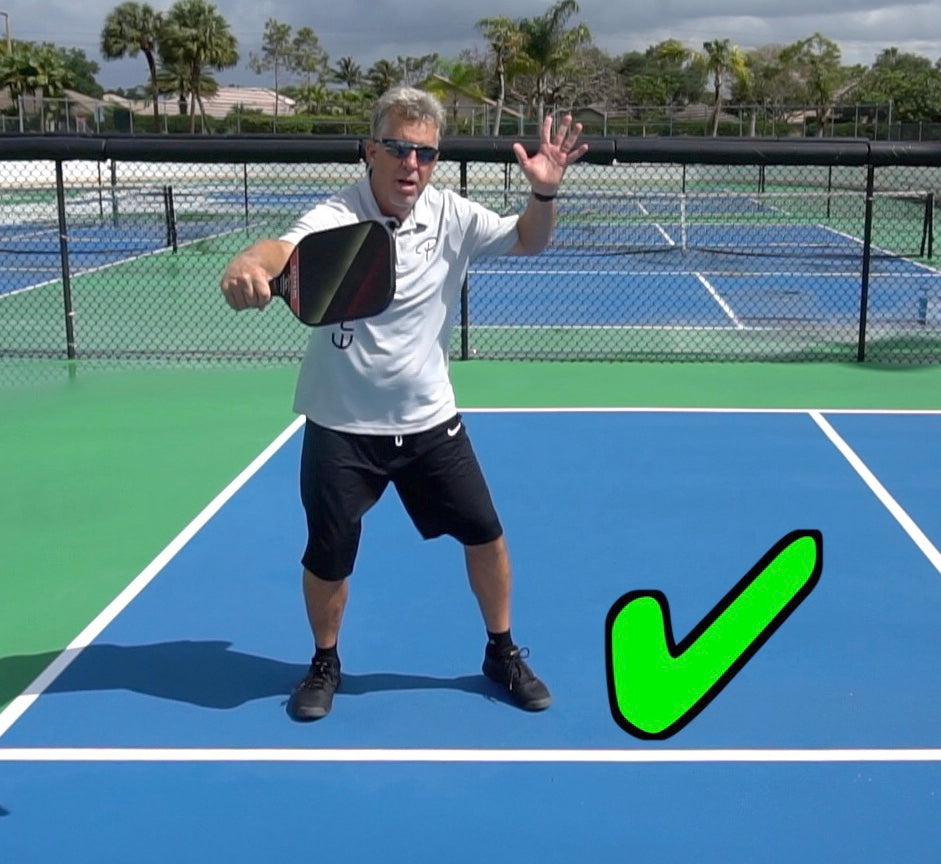
With that said, you may jump in the air over the Non-Volley Zone – without touching the court surface of the Non-Volley Zone or any Non-Volley Zone line – to volley a pickleball. This shot would be called an Erne (more on this shot below). Again, if you touch the Non-Volley Zone line or the Non-Volley Zone surface area, then you must re-establish your feet outside of the Non-Volley Zone before hitting your volley.
What Is an Erne? How to Hit an Erne
An Erne is an advanced shot on the pickleball court and is named after Erne Perry, who elevated the shot and first brought the shot into mainstream competitive play. The Erne is a shot where you hit the pickleball either (1) in the air as you are jumping around the Non-Volley Zone; or (2) after you run around or through the Kitchen and re-establish your feet out of bounds, just to the side of the Non-Volley Zone.
The Erne puts pressure on your opponents to make a quality shot and may cause your opponents to make unforced errors if they lift their heads to look at you running or jumping around the pickleball court, rather than focusing on the pickleball.
To hit an Erne:
- Think and plan ahead, as the goal is to entice your opponents to hit the pickleball toward the sideline that you want to Erne on. This is most likely to happen when your opponents let the pickleball get behind them at the Non-Volley Zone line near the desired sideline;
- Wait to move to the area outside of the Non-Volley Zone on the sideline until your opponent hits or is just about to hit the pickleball (which will help you disguise your advanced move); and
- Run or jump to the area outside of the Non-Volley Zone on the sideline to hit the pickleball. Remember you must establish, or re-establish, your feet outside of the Non-Volley Zone, which could be accomplished by dragging your back foot if you run through the Non-Volley Zone or jumping over the Non-Volley Zone entirely.
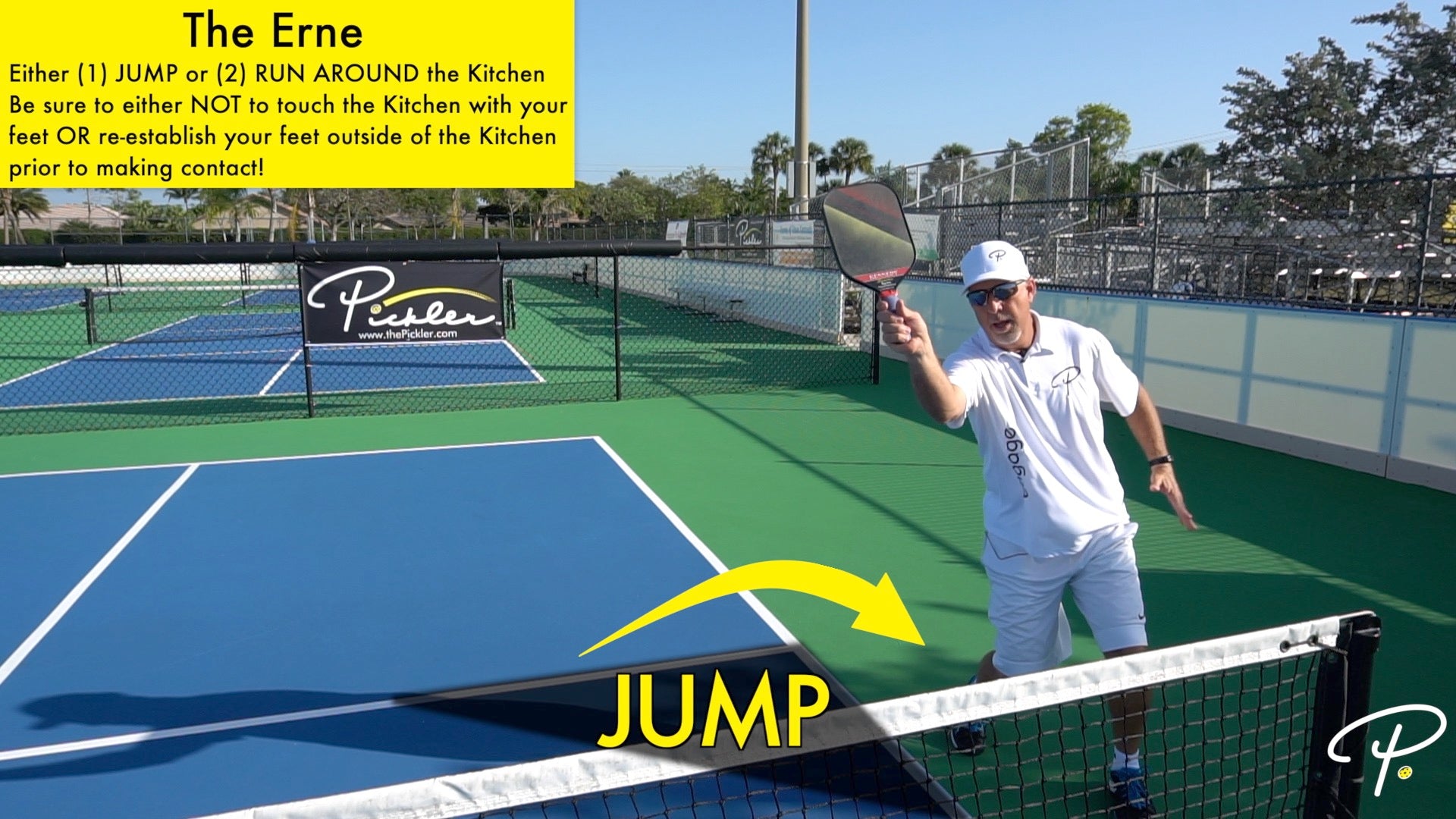
Again, the Official Rulebook for pickleball provides that any contact with the Non-Volley Zone while hitting a volley (in other words, hitting the pickleball out of the air, without the pickleball bouncing) is a fault – and this includes the swing, follow-through, and the momentum from the swing. All volleys – which includes all Ernes – must be executed outside of the Non-Volley Zone. You may jump over the Non-Volley Zone (in the air space above the court), as long as you do not touch the Non-Volley Zone line or the Non-Volley Zone surface area, or, if you touch the Non-Volley Zone, then you must re-establish your feet outside of the Non-Volley Zone before hitting your Erne.
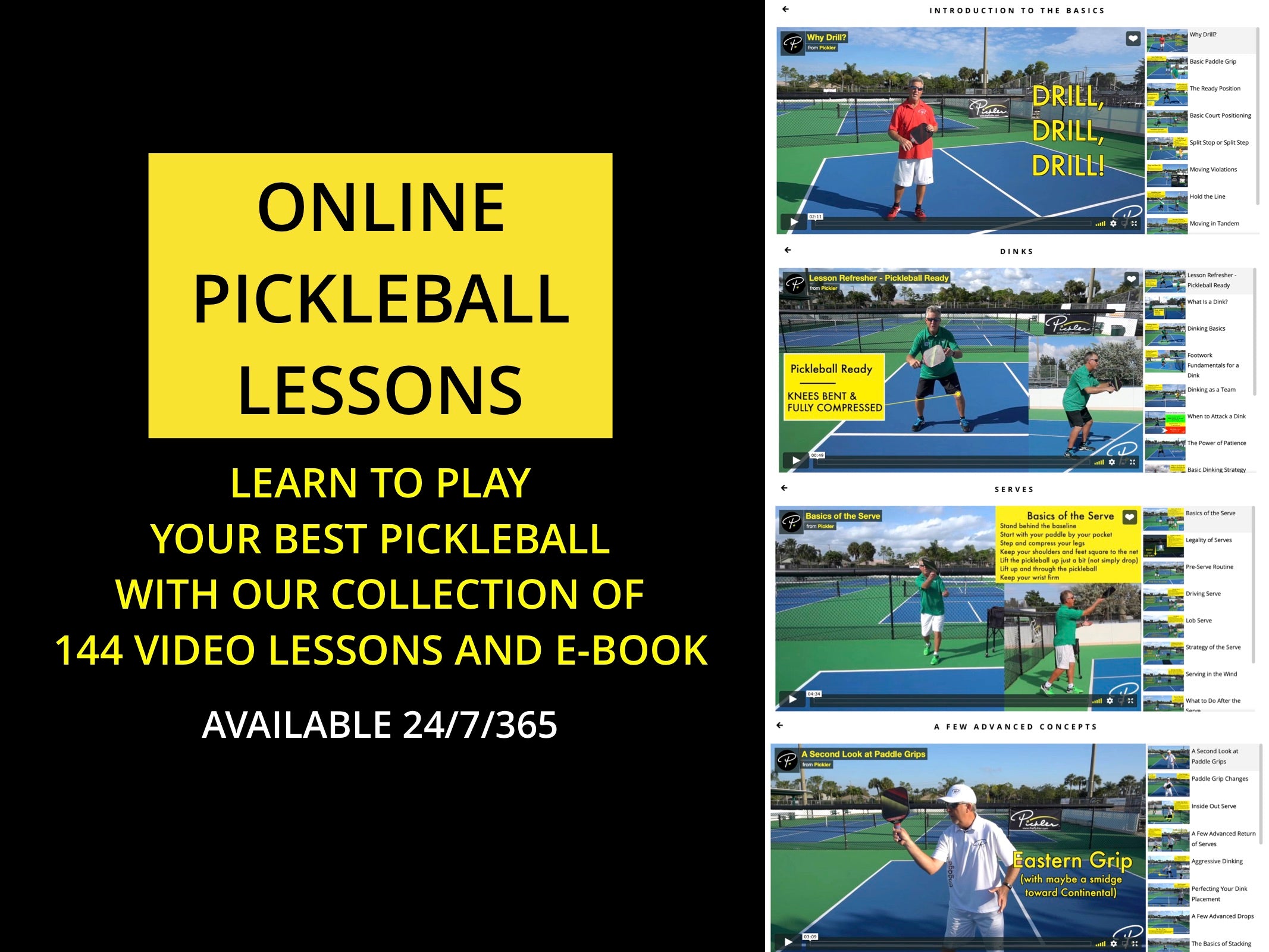
To learn how to master the Erne shot on the pickleball courts, check out Pickler’s online video lesson collection called My Pro Pickleball Coach. My Pro Pickleball Coach is a fraction of the price of one clinic or even one lesson, and features over 140 video lessons (over 7 hours of instruction!), as well as a corresponding e-book. These online video lessons are available on demand 24/7 and breakdown every aspect of the sport of pickleball, including the serve, return of serve, drop, drive, dink, lob, overhead, and advanced shots in the sport of pickleball, as well as pickleball drills, strategy, and advanced concepts like the Erne shot.
Serves May Not Land in the Non-Volley Zone or on the Non-Volley Zone Line
The Non-Volley Zone rules are also implicated on the serve in pickleball. As a reminder, the pickleball serve must go over the pickleball net (although the pickleball may touch the pickleball net – there are no service lets in the game of pickleball) and land in the service box that is crosscourt from the server. In other words, the serve must land in the area enclosed by the baseline, sideline, Non-Volley Zone line, the centerline, that is diagonal from the server on the pickleball court. With that said, the pickleball may not land in the Non-Volley Zone or on the Non-Volley Zone line on the serve. If the pickleball lands in the Non-Volley Zone or on the Non-Volley Zone line, then the server would have committed a fault. However, to note, the served pickleball may land on any other line – the baseline, sideline, or centerline.
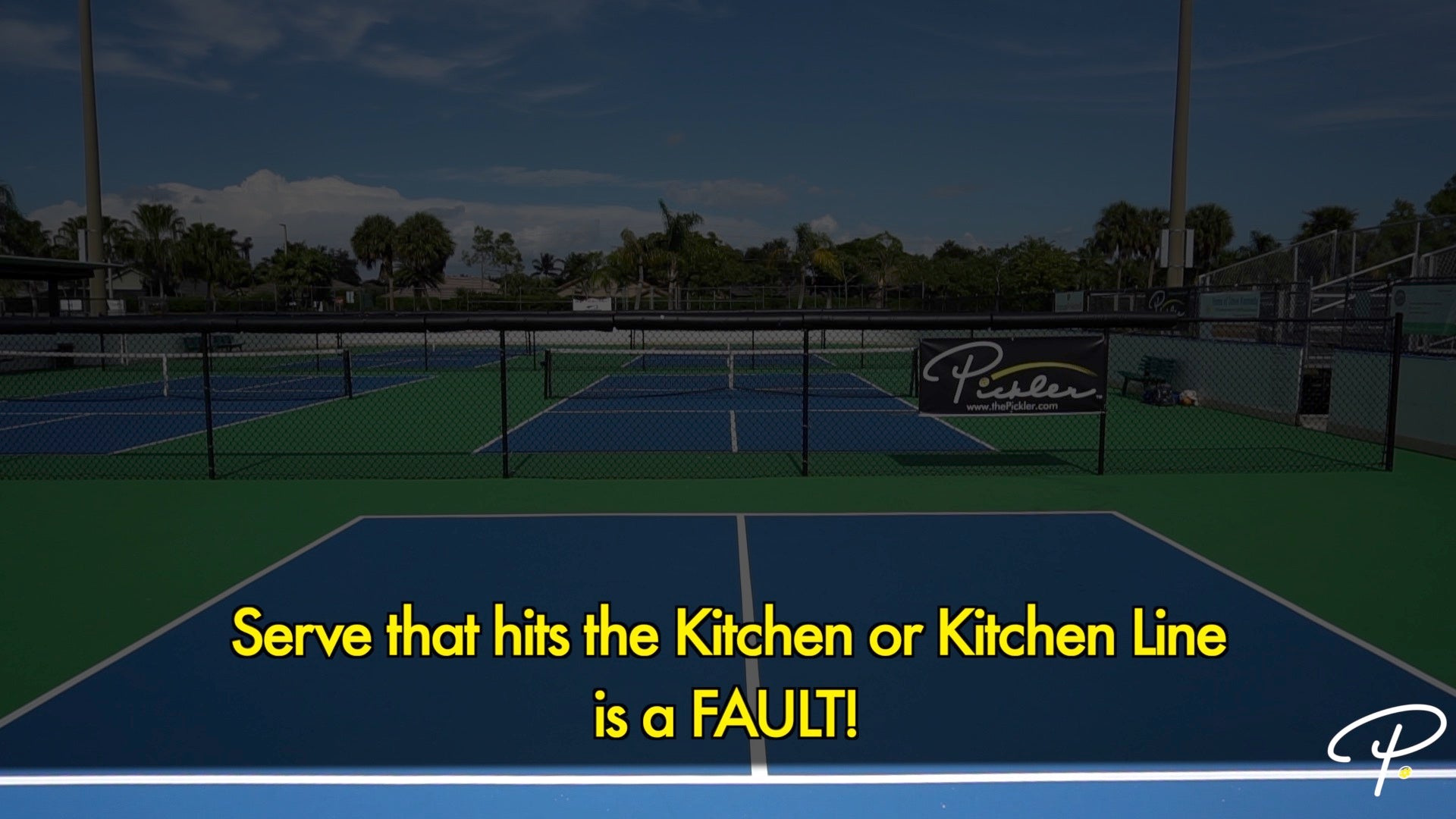
Pickleball Rules – What to Master Next?
Now that you have mastered the pickleball Non-Volley Zone or Kitchen rules, it is time to master the pickleball serving rules!
Also, if you want more tips, strategies, and in-depth coaching to improve your pickleball game, check out Pickler’s online video lesson collection called My Pro Pickleball Coach.
Looking for More Pickleball Rules?
We know pickleball rules can be tricky at times. Don’t worry. Pickler explains the ins and outs of all of the pickleball rules in a series of pickleball rules blogs to make sure that you make the right call on the pickleball court. Learn more by visiting Pickler’s pickleball rules blogs that are linked below!
- Pickleball Rules – The Ultimate Guide to the Rules of Pickleball
- 10 Must Know Pickleball Rules Before Your Hit the Court
- 10 Pickleball Rules Changes to Learn for 2021
- Pickleball Rules – Learn How to Start – 5 Things You Need to Play
- Pickleball Dictionary – Quickly Learn the Pickleball Vocabulary
- Pickleball Serving Rules – Master the Start of Every Pickleball Game
- Pickleball Scoring Rules – Learn How to Keep the Score in Pickleball
- Pickleball Kitchen Rules – Learn Important Non-Volley Zone Rules
- Pickleball Line Call Rules – How to Make the Right Call
- Pickleball Rules – Faults & Dead Balls on the Pickleball Court
- Pickleball Rules – Commonly Misunderstood Rules in Pickleball
- Pickleball Tournament Rules – Must Read Before a Tournament
- Singles Pickleball Rules – How to Play Singles Pickleball
- Wheelchair Pickleball Rules – How to Play Wheelchair Pickleball

